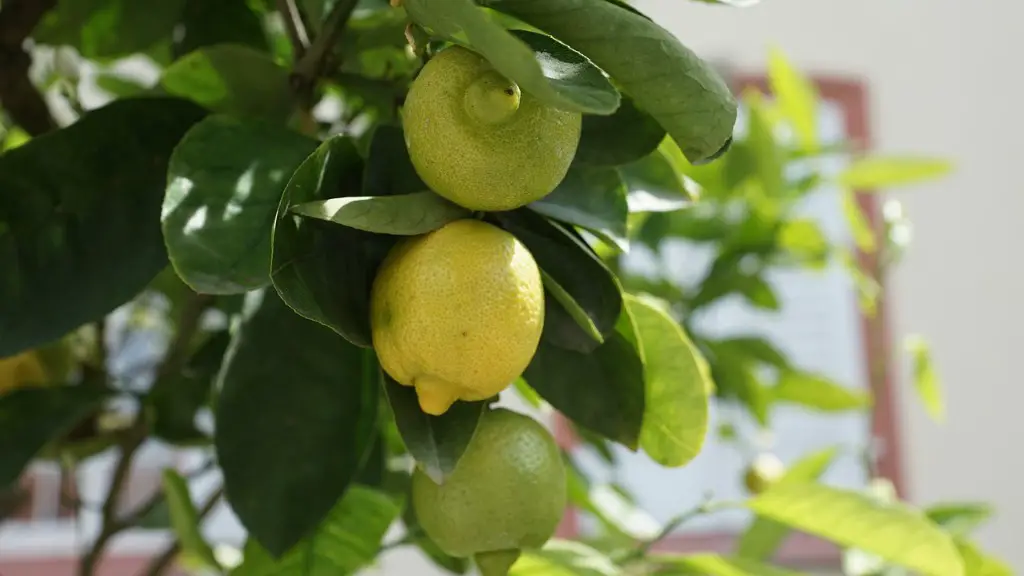Step 1: Preparing the Seed for Germination
Avocado trees are remarkably resilient and can be easily grown from a single seed. However, there are some steps needed for successful germination and the first is to prepare the seed. Start by carefully removing the pit from the avocado and then washing it off thoroughly to remove any remaining fruit. Then you can use a file or sandpaper to carefully remove the brown, outer layer of skin. Make sure not to file off too much, as that could damage the seed. Once you’re done, it’s time to put the seed into a solution that will help it germinate. This can be done by submerging the seed in a cup of distilled water overnight, or allowing the seed to float in a bowl of distilled water for several days.
Step 2: Planting the Germinated Seed
When the seed is ready to plant, it’s time to fill a container with potting soil. Make sure to use a high-quality soil that is rich in organic matter. Before adding the soil, make several small holes in the bottom of the container, as this will help water to properly drain and reduce the risk of root rot. Once you’ve added the soil, lightly moisten it and then carefully press the germinated seed into the soil. It should be buried up to the neck but not completely under the soil.
Step 3: Caring for the Seedling
Once the seed has been planted, ensure that the soil is always lightly moist but not overly wet or soggy. Place the container in a spot that gets full sunlight and always keep the soil at an even temperature. Make sure to check on the seedling every day and to adjust the soil moisture as needed. It can take weeks or even months before the first sprouts appear, but once they do, regular watering and occasional repotting should help keep the plant healthy.
Step 4: Pruning and Fertilizing the Tree
As the tree begins to grow, it’s important to start pruning it to keep it healthy. Avocado trees should be pruned every 3-4 months to encourage proper aeration and sunlight exposure. Additionally, fertilizing the tree every two months can help to keep it healthy as well. It’s best to use a high-quality fertilizer that is specially made for avocado trees.
Step 5: And Finally, Harvesting the Fruit
Harvesting the avocado fruit can typically begin around 24-36 months from planting. When the fruit is ripe and ready for harvest, the skin will become darker and more bumpy in texture. Be sure to use a soft cloth or protective gloves when harvesting so that you don’t damage the fruit. After harvesting the fruit, you can enjoy it or store it in a cool area for up to a week.
Propagating the Avocado Tree
Propagating an avocado tree is a relatively simple process, although there are some slight variations between each method. The two most common methods of propagating an avocado tree are from cuttings and grafting.
When propagating from cuttings, the best time to get started is between December and April, as this is when the growing season for avocados begins. Start by trimming a healthier branch and rooting hormones can be added to the cut area in order to increase the rooting success. It can take around three to five weeks for the cutting to take root. After this period, the newly planted avocado tree can be transferred to a pot or planted in the ground.
Grafting is another method of propagating an avocado tree. This method involves taking a scion, or branch, from an existing avocado tree and grafting it onto a rootstock. Grafting is a more complicated process and is best done with the help of an experienced horticulturist. However, the reward for succeeding with this technique is that the new tree will be a clone of the parent tree.
Fertilizing and Watering the Avocado Tree
Fertilizing and watering an avocado tree are vital for keeping it healthy and productive. It’s best to fertilize avocado trees every two to three months during the growing season. A fertilizer with a higher nitrogen content is recommended, as this will help to ensure that the leaves remain green and healthy.
When watering an avocado tree, make sure to keep a consistent watering schedule in order to encourage healthy growth. It’s best to water the tree at the base rather than from above, as this can help to prevent disease. Additionally, avoid allowing the soil to become overly wet, as this can encourage root rot.
Protecting the Avocado Tree from Pests and Disease
Avocado trees are vulnerable to pests and diseases. Common pests include spider mites, mealybugs, and nematodes, while common diseases include root rot, anthracnose, and blight. It’s important to take proper precautions to protect your tree from these threats.
One of the best ways to do this is to ensure that the tree is planted in a location that has adequate air circulation. This will help to reduce the risk of pests and diseases. Additionally, regular pruning can be beneficial, as it will help to increase air flow and promote healthy growth. Finally, there are numerous pest control options available, including natural sprays and fertilizers.
Harvesting the Avocado Fruit
When it comes to harvesting the avocado fruit, timing is everything. The best way to determine whether the fruit is ripe and ready to harvest is by checking its color and texture. A ripe avocado will yield to gentle pressure and have a slightly dark color. Additionally, make sure to wear protective gloves or use a soft cloth when handling avocados, as they are easily bruised and damaged.
Once the avocado has been harvested, it can be stored in a cool place for up to a week. It’s also important to remember that unripened avocados can be ripened at home by placing them in a bowl with bananas or apples. This will help to speed up the ripening process.
Preserving the Avocado Tree
Avocado trees can easily be preserved for years with minimal effort. To begin, you’ll need to provide the tree with regular pruning, fertilization, and watering. Additionally, it’s important to ensure that the tree is planted in a location that has adequate air circulation and to check for pests and diseases on a regular basis.
It’s also essential to properly care for the soil the tree is planted in. Adding mulch and organic matter to the soil can help to provide the tree with needed nutrients and improve its health. Additionally, adding compost can be beneficial, as it will promote deeper root growth and provide better overall drainage.
Learning How to Care and Maintain an Avocado Tree
Caring for an avocado tree requires knowledge, patience, and dedication. It’s important to learn how to properly prepare and germinate the seed, water and fertilize the tree, protect it from pests and diseases, and harvest the fruit. Additionally, learning how to propagate and preserve the tree can help to ensure that it produces an abundance of delicious, healthy avocados for years to come. With the right care and maintenance, an avocado tree can be a rewarding and enjoyable addition to any home garden.

